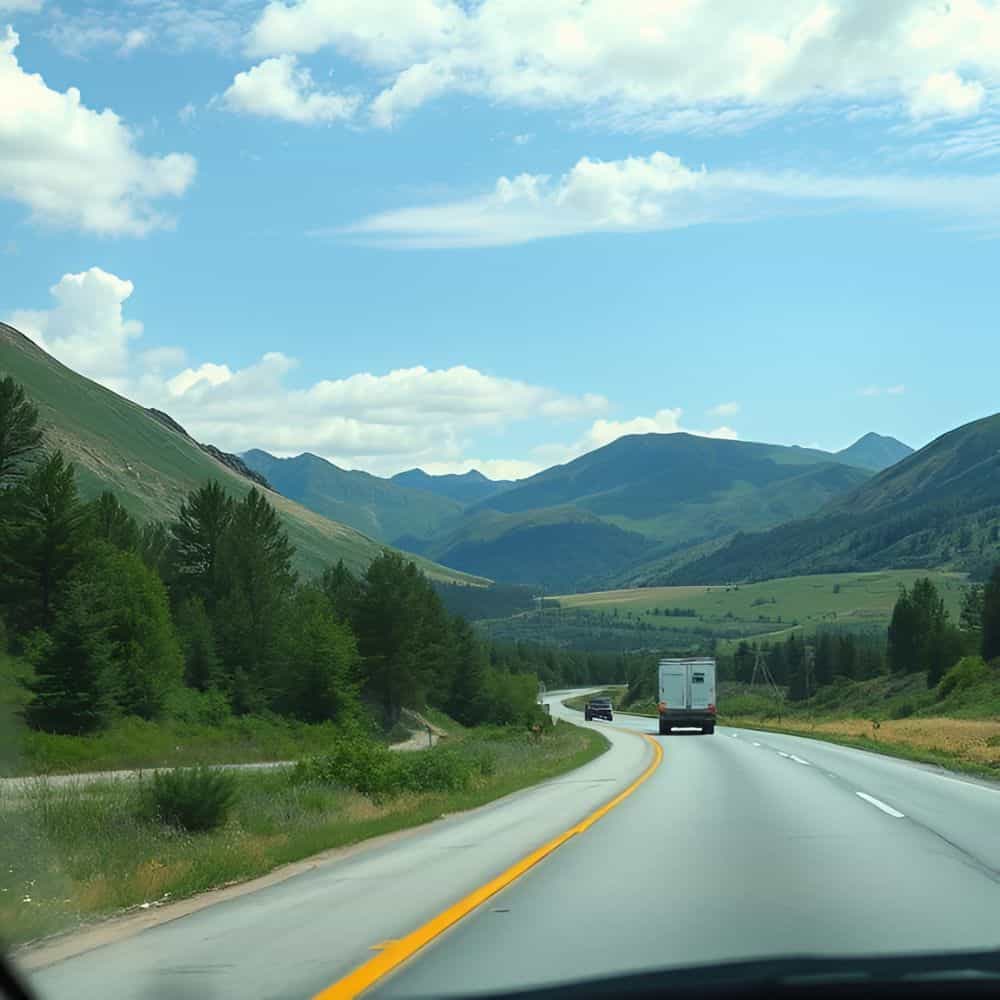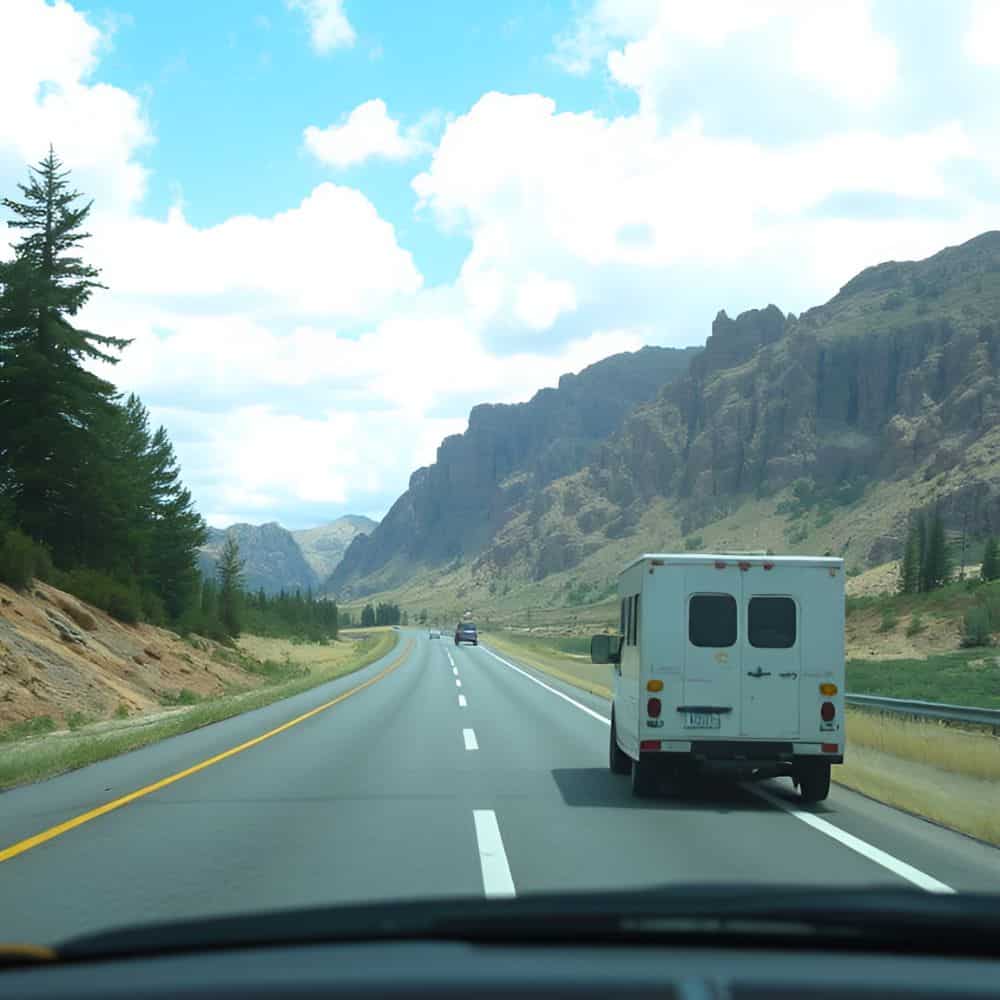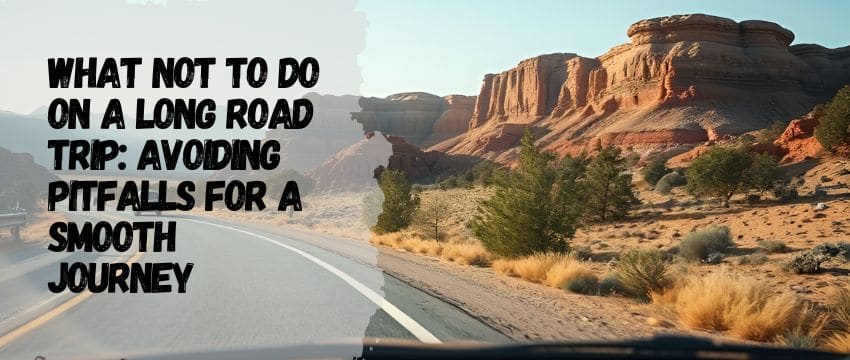Introduction: The Thin Line Between Adventure and Misadventure
A long road trip promises freedom, discovery, and unforgettable memories. But one wrong move—a missed maintenance check, an overloaded itinerary, or a fast-food binge—can turn your dream drive into a nightmare of breakdowns, burnout, and regret. This guide exposes the most common (and costly) mistakes travelers make on extended journeys, offering actionable solutions to keep your trip on track. Whether you’re a first-time road tripper or a seasoned nomad, understanding what not to do is as crucial as knowing what to do. Let’s navigate the pitfalls together.
1. Don’t Overpack: The Art of Strategic Minimalism
Overpacking is the silent saboteur of road trips. A trunk crammed with unnecessary gear reduces fuel efficiency, blocks rearview visibility, and turns every stop into a chaotic treasure hunt.

The Consequences of Excess
- Weight Drag: Every 100 lbs of extra cargo reduces MPG by 1–2%, costing you $$$ on gas.
- Lost Time: Digging through suitcases for a jacket or charger adds stress and delays.
- Safety Risks: Unsecured items become projectiles during sudden stops.
What to Do Instead
- Use the 80% Rule: Fill your trunk to 80% capacity, leaving room for souvenirs.
- Multi-Functional Items: Pack convertible clothing (e.g., zip-off pants) and collapsible gear.
- Digital Over Physical: Replace paper maps and books with apps like Google Maps and Kindle.
Pro Tip: Roll clothes instead of folding—it saves space and minimizes wrinkles.
2. Don’t Skip Vehicle Prep: Avoiding Mechanical Meltdowns
Ignoring pre-trip vehicle checks is like skydiving without a parachute. Breakdowns in remote areas are costly, dangerous, and trip-derailing.
Common Oversights
- Old Tires: Bald treads increase blowout risks, especially in summer heat.
- Expired Insurance: Letting coverage lapse leaves you financially vulnerable.
- Ignoring Warning Lights: A flickering “Check Engine” light could signal critical issues.
What to Do Instead
- Pre-Trip Inspection: Visit a mechanic for fluid checks, brake tests, and belt inspections.
- Emergency Kit: Include jumper cables, a tire inflator, and a portable jump starter.
- Roadside Assistance: Enroll in AAA or verify your insurance includes towing.
Pro Tip: Test your spare tire’s pressure—flat spares defeat their purpose.
3. Don’t Overplan: The Tyranny of the Itinerary
An itinerary packed back-to-back with attractions breeds exhaustion, not enjoyment. Racing from the Grand Canyon to Vegas in one day leaves no room for spontaneity or rest.
The Toll of Overplanning
- Driver Fatigue: Constant rushing leads to burnout and impaired focus.
- Missed Magic: Some of the best moments (e.g., roadside sunsets) are unplanned.
- Group Tension: Overambitious schedules spark arguments among travelers.
What to Do Instead
- Buffer Days: Add 1–2 unscheduled days for rest or detours.
- Anchor Points: Choose 1–2 must-see stops per day; let the rest unfold.
- Time Zones: Factor in time changes (e.g., crossing from Arizona to Utah).
Pro Tip: Use apps like Roadtrippers to estimate drive times with stops.
4. Don’t Neglect Health: Fueling Your Body Wisely
Surviving on gas station snacks and energy drinks is a recipe for crashes—both vehicular and metabolic.
Risks of Poor Nutrition
- Sugar Crashes: Spikes and dips in energy impair reaction times.
- Dehydration: Dry cabin air + caffeine = headaches and fatigue.
- Muscle Cramps: Hours of sitting cut circulation, causing leg and back pain.
What to Do Instead
- Hydration Strategy: Sip water hourly; add electrolytes to avoid over-drinking.
- Healthy Snacks: Pack nuts, fruit, and protein bars instead of chips.
- Stretch Breaks: Every 2 hours, walk for 10 minutes to boost circulation.
Pro Tip: Freeze water bottles as ice packs—they’ll thaw into drinks.
5. Don’t Drive Fatigued: The Silent Killer
Pushing through drowsiness is as dangerous as drunk driving. The NHTSA attributes 100,000+ annual crashes to fatigue.
Red Flags of Fatigue
- Drifting lanes
- Missing exits
- Heavy eyelids
- Irritability
What to Do Instead
- Power Naps: Pull over at rest stops for 20-minute naps.
- Driver Rotation: Switch every 3–4 hours if possible.
- Natural Stimulants: Chew ginger or sniff peppermint oil for alertness.
Pro Tip: Avoid heavy meals before driving—they induce sleepiness.

6. Don’t Ignore Weather Warnings: Nature’s Curveballs
Blizzards, flash floods, and heatwaves don’t care about your plans. Failing to check forecasts risks stranding you in deadly conditions.
High-Risk Scenarios
- Summer: Overheating engines in deserts (e.g., Death Valley).
- Winter: Black ice on mountain passes (e.g., Colorado’s I-70).
- Monsoon Season: Sudden floods in the Southwest.
What to Do Instead
- Check Apps: NOAA Weather Radar or Weather Underground for real-time updates.
- Carry Gear: Blankets, sandbags, or tire chains seasonally.
- Know When to Stop: Postpone driving if conditions worsen.
Long Road Trip Mistakes at a Glance
Mistake | Consequences | Solutions |
|---|---|---|
Overpacking | Reduced MPG, clutter, safety hazards | Use packing cubes, prioritize essentials. |
Skipping vehicle prep | Breakdowns, costly repairs | Pre-trip inspection, emergency kit. |
Overplanning | Burnout, missed spontaneity | Buffer days, anchor points, flexible itinerary. |
Poor nutrition | Fatigue, cramps, dehydration | Hydrate, pack healthy snacks, stretch breaks. |
Driving fatigued | Increased crash risk | Power naps, driver rotation, natural stimulants. |
Ignoring weather | Stranded in dangerous conditions | Check forecasts, carry gear, know when to stop. |
Conclusion: Wisdom Lies in Avoiding Folly
A successful road trip isn’t just about the destinations you reach—it’s about the mistakes you avoid. By sidestepping these common pitfalls, you’ll preserve your energy, budget, and sanity, ensuring the journey remains as rewarding as the destination.
FAQs
1. How to deal with a long road trip?
Plan rest stops every 2–3 hours to stretch and refuel. Stay hydrated with water, not sugary drinks. Use apps like Waze to avoid traffic and find amenities. Rotate drivers if possible to prevent fatigue. Pack entertainment like podcasts or audiobooks to stay engaged.
2. How to plan the perfect road trip?
Research routes and bookmark scenic stops. Balance driving time with exploration—aim for 4–6 hours of driving daily. Book accommodations in advance for popular areas. Prepare a flexible itinerary with buffer days. Pack essentials like snacks, maps, and emergency supplies.
3. How to prepare your body for a road trip?
Strengthen core muscles with planks to combat back pain. Stay hydrated days before the trip to preempt dehydration. Practice sitting for long periods to acclimate. Avoid heavy meals pre-departure to prevent drowsiness. Stretch hamstrings and hips to improve circulation.
4. How to survive a 10-hour drive?
Start early to maximize daylight driving. Take 15-minute breaks every 2 hours to walk. Snack on protein-rich foods like almonds for steady energy. Adjust seats and steering wheel for ergonomic comfort. Use cruise control on highways to reduce leg fatigue.
5. How to stop cramps in the car?
Stretch calves and hamstrings during breaks. Stay hydrated with electrolyte-enhanced water. Avoid crossing legs to improve blood flow. Use a lumbar pillow to support posture. Massage cramped areas with a tennis ball or foam roller.
Dodge the pitfalls, embrace the wisdom, and let the road unfold as it should—smoothly. 🚗💨
Our team is creating outdoor-gear relevant articles with passion. If our articles can help you to find the correct solutions for your questions, we will be happy about that. In the content creation process, we usually collect accurate and useful information online or offline to compile our content in an organized way. Consequently, we can guarantee that you can discover some expected answers to your questions. We appreciate your time on our site.










